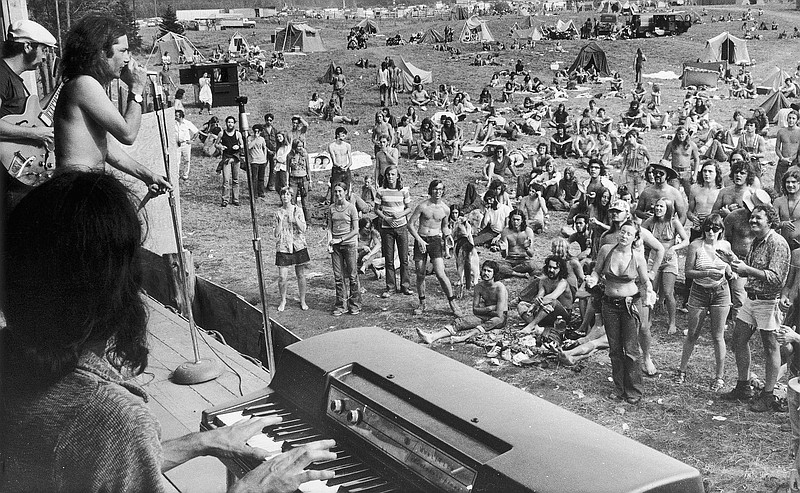MONTPELIER, Vt. (AP) - Vermont in the 1970s was a hotbed for the counterculture, and the influx of young people had a lasting influence on the state's politics, agriculture and food and offbeat culture.
After two years of research, the Vermont Historical Society's exhibit "Freaks, Radicals & Hippies: Counterculture in the 1970s in Vermont" opens at the Vermont History Center in Barre on Sept. 24.
"We quickly realized it was more than just getting back to the land and living on a commune and having organic farming," said curator Jackie Calder.
Vermont's population, which had been relatively stagnant, jumped 14 percent in the 1960s and 15 percent in the 1970s, with more than half the increase in the latter decade from people moving in from out of state.
Some of what the researchers found after surveying 725 people online and interviewing others, most of whom said they were members of the counterculture.
___
WHY VERMONT?
They were drawn to the state for its beauty, rural nature, relatively inexpensive land and farms, and its proximity to Boston and New York City and New Jersey.
The small state also had a lot of colleges, so some were students who stuck around.
"So they could come to these rural areas and look at a farm that hadn't been lived in for quite a while, sometimes abandoned for a few years but maybe a few decades. It looked pretty good to them, so they moved in," said curator Jackie Calder.
A lot of people were visiting friends and ended up staying.
___
WHERE THEY CAME FROM
Primarily from other New England states, New York or New Jersey.
___
JOIN A COMMUNE?
Thirty percent of those surveyed said they lived on communes. Vermont had a large commune population, probably one of the largest in the Northeast, but it was relatively small compared with California's, Calder said.
___
THEY WERE NOT "KIDS"
Most of them were baby boomers who were born between 1946 and 1957.
"So people coming to the state, and especially the people that we interviewed they weren't youngsters. Some of them were already in their mid-20s. They'd finished school. They were adults. Twenty-five is very different in 1970 than 25 is today ... so a lot of these people were not kids," Calder said.
They were involved with politics, community organizing, protest movements, food and sustainability, environmental conservation, arts, crafts, and music before they came to Vermont.
Very few answered in the survey, "We're just dropping out."
___
WELL-EDUCATED HIPPIES
"We know mostly they're middle class, they're white, but their level of education is pretty extraordinary," Calder said.
Seventy-five percent had college degrees and some had post-doctoral education.
"So they're coming into the state where it's almost the opposite in terms of post-high school education," Calder said.
___
HOW THEY INFLUENCED VERMONT - AND HOW VERMONT INFLUENCED THEM
"What the people feared in the 1970s really happened. They infiltrated government, they became part of their community, PTA, legislature, town government and even the federal government," Calder said.
But Vermont also had a big impact on them.
"The other thing that we hear from a lot of the people is they probably wouldn't have made it if they didn't have the support of many of their neighbors at that time," she said.
They lived through hard winters, and none of them froze to death, she said.
"I think their neighbors were keeping an eye on them, and very quickly the people who decided to stay got to know their neighbors and their neighbors got to know them, and they both helped build very strong communities," she said.
